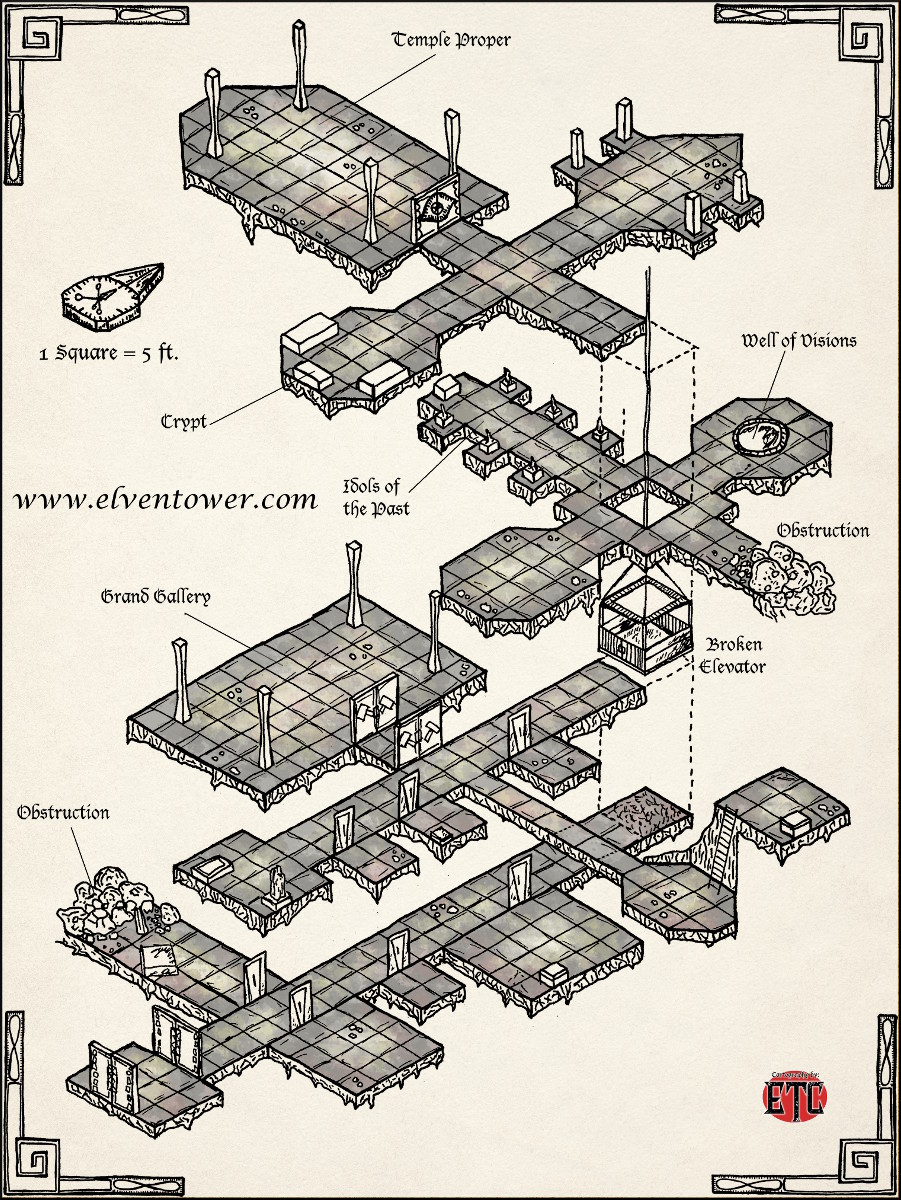Someone complained about the poor layout of current 5e adventure books.
I3 - Pharoah has, I think, very good adventure layout. The encounter descriptions are clear. At each encounter are a there is boxed text first. Then the following get their own paragraph(s) with the heading in bold:
Play
Monster
Character
Treasure
Trap/Trick
Lore
It's always in that order, except for one instance. Even better, in the "Notes to the Dungeon Master" section on page 3, all of the above are detailed in the exact order the DM will see them and with explanations on how to use them.
Example:
Description This is a general description of the area as the players first see it. Any readily noticeable and obvious features are generally described here to allow the DM to read the text directly to the players. these descriptions are boxed-in to be easily distinguishable for the DM. The descriptions were written with the assumption that the characters are using a torch to see by. A torch normally lights a 30-foot radius area.
This is what I want in module design and what I want out of boxed text. It doesn't make for a particularly attractive module or one that's a great read. But it
does make it blindingly easy to run. Boxed text is getting a lot of love in this thread and I wanted to explain what it is I want out of boxed text. But the above paragraph explains it all - noticeable and obvious and in a box so it's noticeable and obvious for the DM!
Don't make DMs roll their own Perception and Investigation to find the information in a module!
Here is the very first encounter area:
B. The Gates of Sule:
[TABLE="class: outer_border, width: 500"]
[TR]
[TD]Rising up out of the dust, twin pillars of stone stand slanting at odd angles, their surfaces pockmarked and sand-worn. Odd inscriptions are faintly visible in the pockmarked surfaces.
[/TD]
[/TR]
[/TABLE]
Play: If no storm as immediately preceded the party's arrival, the trail of horses and human footprints continues only between the two pillars (this track is indicated on the DESERT WILDERNESS MAP).Sinkholes extend up to either side of the pillars (See Area C). Those attempting to go around the pillars must enter area C. The rune inscriptions on the pillars are found in Lore.
Lore: There is a base 30% chance of reading the writing correctly as:
The Gates of Sule curse ye who enter unbidden
It's not a thrill a minute to read, but it tells you everything you need to know to relay information to the PCs and run the adventure.
Here's the beginning part of a rather involved room:
G7. Room of the Guardinas
[TABLE="class: outer_border, width: 500"]
[TR]
[TD]This 20-foot wide hall, and its ceiling, disappear into the darkness. Three pairs of huge statues line the side walls, their tops not visible in the darkness. What appears to be a light blue curtain of translucent material fills the space between the first two statues.
[/TD]
[/TR]
[/TABLE]
Play: The hall is 60 feet long, with a 60-foot ceiling. The statues are 50 feet tall. On a platform, in front of the back wall, there is a huge bronze lamp. there are three Trap/Tricks that must be passed before reaching the platform. There, the Treasure will be found. If the Treasure seal is broken, the Monster will appear. The Treasure cannot be moved until the Monster is released.
You then get Monster, Character (details the monsters motivations), Trap/Trick #1, Trap/Trick #2, Trap/Trick #3, and Treasure.
It does, of course, have inline monster descriptions. The 5e APs are awful by comparison.

